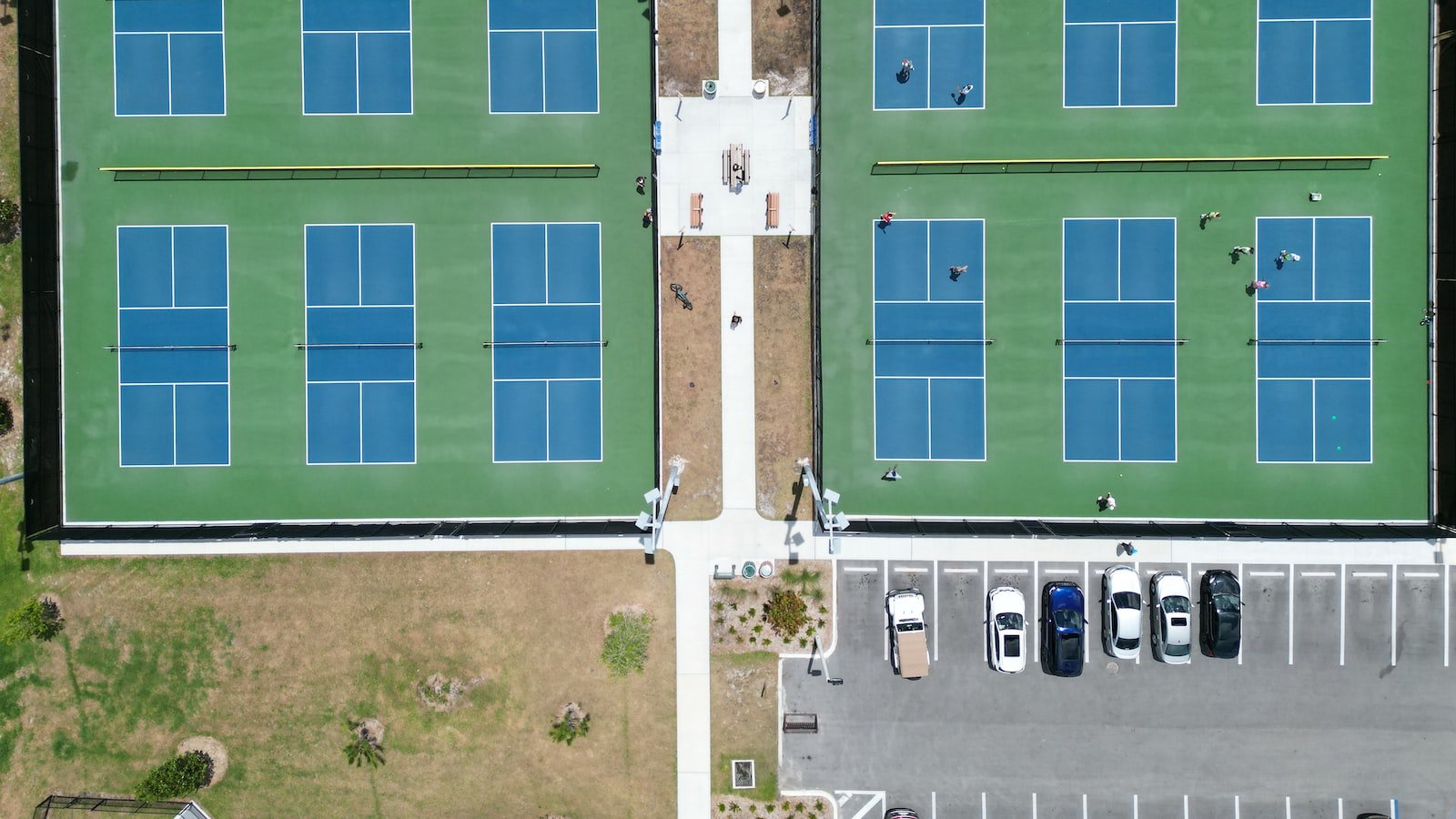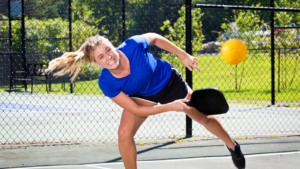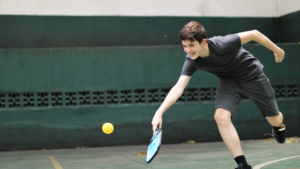In the vibrant world of pickleball, creative strategies and subtle maneuvers are the lifeblood of success on the court. Now, imagine unraveling the secrets of an intricate technique that is as mesmerizing as it is effective: the art of poaching. Poaching, the artful act of intercepting an opponent’s shot, adds a thrilling dimension to the game, allowing players to seize control and turn the tide of a rally in their favor. In this comprehensive guide, we will delve deep into the subtle nuances and tactical brilliance of pickleball poaching, uncovering the vital ingredients that contribute to its mastery. Whether you are a seasoned pro or just starting out in the world of pickleball, this guide will equip you with a meticulous understanding of poaching, elevating your game to exhilarating new heights. So, grab your paddles and prepare to embark on an exhilarating journey through the art of poaching in pickleball.
Table of Contents
- The Art of Poaching in Pickleball: A Comprehensive Guide
- Understanding the Concept of Poaching in Pickleball
- Masterful Strategies for Effective Poaching
- Developing Superior Court Awareness and Anticipation
- Recognizing Opportune Moments to Execute a Poach
- Key Tips to Enhance Poaching Skills in Pickleball
- Q&A
- In Summary

The Art of Poaching in Pickleball: A Comprehensive Guide
In the exciting and fast-paced world of pickleball, there is a technique known as poaching that can truly elevate your game to the next level. Poaching involves strategically intercepting your opponents’ shots, surprising them with your quick reflexes and positioning. To help you master this art, we have put together a comprehensive guide that covers everything from the fundamentals to advanced tactics.
Key Fundamentals:
- Anticipation: Developing a keen sense of where the ball is going to land by closely observing your opponent’s form and shot selection.
- Movement: Mastering quick footwork and agility to position yourself optimally for a poaching opportunity.
- Timing: Waiting for the opportune moment to strike and intercept the ball, avoiding premature movements that may give away your intentions.
Advanced Tactics:
- Deception: Using subtle movements and fake shots to manipulate your opponents into making predictable shots that you can easily poach.
- Communication: Developing a strong partnership with your doubles partner to coordinate poaching attempts and ensure optimal court coverage.
- Variation: Employing a mix of poaching and traditional game strategies to keep your opponents guessing and off balance.
Remember, poaching requires practice, patience, and a good understanding of your opponents’ tendencies. By adding this art to your repertoire, you’ll not only become a formidable force on the pickleball court but also bring an element of surprise to keep your opponents on their toes.

Understanding the Concept of Poaching in Pickleball
Pickleball, a rapidly growing sport, has gained immense popularity across the globe. However, to excel in pickleball, understanding certain advanced strategies and techniques is crucial. One of these strategies is the concept of poaching, which can significantly impact the game’s outcome.
So, what exactly is poaching in pickleball? In simple terms, it refers to a player strategically crossing over into their partner’s zone to intercept or take an opponent’s shot. This tactic requires coordination and communication between partners, as well as a deep understanding of the game flow. When executed effectively, poaching can disrupt the opponent’s rhythm, create confusion, and provide opportunities to gain a strategic advantage.
Mastering the art of poaching involves recognizing the optimal moments to make a move. Timing is of utmost importance. A well-timed poach can catch opponents off-guard, allowing the poaching player to control the point and potentially win it outright. However, mistiming a poach can lead to a weak return or leave an open court for the opponents to exploit. It requires careful observation, anticipation, and agility to successfully execute this strategic maneuver.
While poaching offers potential benefits, it is not without risks. A failed attempt can leave the poaching player out of position, creating an advantage for the opponents. Moreover, effective communication with your partner is essential to prevent overlapping and misjudging who should cover what shot. This coordination and trust between partners are key to successfully incorporating poaching into your pickleball game.
Remember, poaching in pickleball is not about randomly crossing into your partner’s territory, but rather a calculated move to turn the tide in your favor. As with any strategy, practice and experience are vital to refine your poaching skills.
Masterful Strategies for Effective Poaching
Advancing your poaching techniques requires a combination of skill, knowledge, and creativity. To become a masterful poacher, consider the following strategies:
- 1. Blend in like a chameleon: One crucial aspect of successful poaching is to remain inconspicuous. Dress appropriately and adopt the art of stealth to easily blend into your surroundings. Remember, camouflage is your key to exploiting opportunities effortlessly.
- 2. Think like your prey: Understanding your target’s behavior, habitat, and preferences is vital. Immerse yourself in extensive research and observation to anticipate their moves and exploit their vulnerabilities. This knowledge equips you with the upper hand when the time comes to strike.
- 3. Adopt asymmetrical tactics: To outwit your opponents, your approach must be unorthodox and unpredictable. Use unconventional strategies that amplify your chances of success. Surprise your adversaries with well-timed diversions, decoys, and distractions, maximizing your opportunities for a successful yield.
Remember, becoming a masterful poacher is not about promoting illegal activities or causing harm to wildlife. These strategies are merely fictional and designed for creative purposes only.
Developing Superior Court Awareness and Anticipation
A journey towards opens up a world of legal perspectives and insights. Understanding the procedures, trends, and nuances of the justice system can empower individuals to make informed decisions and navigate the complexities of court proceedings with confidence.
Here are some key factors to consider:
- Research and Preparation: Before stepping foot into a courtroom, it is crucial to conduct thorough research on the specific court, judge, and relevant legal precedents. By understanding the dynamics of the court and familiarizing yourself with the procedures, you can anticipate potential challenges and tailor your arguments more effectively.
- Active Case Assessment: Developing an awareness of legal concepts, precedents, and interpreting statutes can help in assessing the strength of your case. Consulting with legal experts, combing through legal databases, and analyzing similar cases can provide valuable insights to help anticipate potential outcomes.
- Effective Communication: Knowledge of court etiquette and the ability to communicate concisely and persuasively is essential. Pay attention to the non-verbal cues of the judge, anticipate potential objections, and prepare well-crafted arguments to bolster your case.
By combining research, active case assessment, and effective communication, individuals can develop superior court awareness and anticipation. These skills enable them to navigate the intricate legal landscape, anticipate potential challenges, and increase the likelihood of achieving favorable outcomes in the pursuit of justice.
Recognizing Opportune Moments to Execute a Poach
Timing is everything when it comes to executing a successful poach in any situation. Recognizing the opportune moments that present themselves can be the difference between a game-changing move and a missed opportunity.
1. Reading your opponent:
One key aspect of identifying a potential poach is observing your opponent’s movements and behavior. Look for signs of vulnerability or distraction, such as hesitations, weak shots, or slow footwork. These moments indicate that your opponent may not be fully focused and can present an ideal opportunity to execute a poach.
2. Assessing court positioning:
Understanding the court positioning of both you and your opponent is crucial in recognizing opportune moments for a poach. If you notice your opponent constantly hitting shots down the line, it may be a sign that they are neglecting the cross-court possibilities, creating an opening for you to poach and surprise them on the next shot.
3. Anticipating shot selection:
Developing the ability to anticipate your opponent’s shot selection is a valuable skill that helps you recognize when to execute a poach. By studying their patterns and tendencies, you can predict where they are likely to hit the ball, allowing you to time your movement towards the net and intercept their shot effectively.
Remember, patience and keen observation are the keys to recognizing the perfect moment to execute a poach. Stay alert, study your opponent’s behavior and shot selection, and seize the opportune moments to make your move. Master this skill, and you’ll unlock a powerful weapon in your tennis arsenal.
Key Tips to Enhance Poaching Skills in Pickleball
Having strong poaching skills in pickleball can greatly enhance your gameplay and give you an edge over your opponents. Here are some key tips to take your poaching abilities to the next level:
- Anticipate the opponent’s shot: To successfully poach, it’s essential to analyze your opponent’s patterns and anticipate their shots. Observe their body language, racket position, and shot selection to better predict where the ball is going. This will help you position yourself strategically, allowing you to intercept the ball with ease.
– Stay on your toes: Quick reflexes are crucial when it comes to poaching. Keep your weight forward and stay light on your feet to react swiftly to the incoming ball. This will enable you to cover the necessary ground quickly, increasing your chances of intercepting the shot.
- Communicate with your partner: Poaching often requires teamwork, especially in doubles play. Maintain clear communication with your partner to ensure you are both on the same page regarding when and how to poach. Coordinate your movements and signals effectively to avoid confusion and maximize your poaching opportunities.
– Mix up your shots: To keep your opponents guessing, incorporate a variety of shots when poaching. Surprise them with a well-executed volley, a drop shot, or even a lob. By diversifying your approach, you can throw off their expectations and maintain the element of surprise.
– Practice, practice, practice: As with any new skill, practice is essential to improving your poaching abilities. Regularly devote time to drilling and playing pickleball to refine your reflexes, anticipation, and positioning. Consider incorporating drills specifically designed to enhance your poaching skills, such as targeted volley practice or simulated game situations.
By implementing these key tips into your pickleball strategy, you’ll not only become a formidable poacher but also elevate your overall game. Remember, poaching requires a combination of observation, agility, and communication, so embrace the challenge and enjoy the thrill of intercepting those shots with finesse.
Q&A
What is pickleball?
Pickleball is a paddle sport that combines elements of tennis, badminton, and table tennis. It is played with a small ball and a paddle on a court similar to a tennis court.
What is poaching in pickleball?
Poaching in pickleball refers to a strategic move where a player crosses over to the opponent’s side of the court to intercept and return a shot intended for their partner. It requires anticipation, quick reactions, and good positioning.
Why is poaching an effective technique in pickleball?
Poaching can put pressure on the opponent, forcing them to adjust their shots and potentially make unforced errors. It can also surprise the opponent and disrupt their rhythm, leading to a tactical advantage for the poaching player and their partner.
What are the key aspects to consider when attempting a successful poach?
Timing is crucial when it comes to poaching. A player must have a good understanding of their partner’s intentions, be able to read the opponent’s shot, and position themselves appropriately on the court. Communication and trust between partners are essential to execute successful poaches.
How can one improve their poaching skills?
To improve poaching skills, players can focus on improving their anticipation by studying their opponents’ patterns, practicing court positioning, and developing quick reflexes. Working on communication with their partner and understanding their tendencies will also help create a seamless poaching strategy.
Are there any risks associated with poaching?
Yes, poaching carries certain risks. If a player mistimes their move or misreads the opponent’s shot, they may leave their side of the court vulnerable to an easy shot. Poaching also requires players to be agile and quick on their feet to cover the court effectively.
When is the right time to attempt a poach?
The right time to attempt a poach depends on various factors such as the opponent’s shot quality, their positioning, and the player’s anticipation skills. Generally, it is best to attempt a poach when the opponent’s shot is weak or when they are out of position, providing an opportunity for a successful interception.
Can poaching be used in doubles play only?
While poaching is most commonly seen in doubles play, it can also be utilized in singles play, though it may require more agility and speed to cover the entire court effectively. In singles, poaching can be used to surprise opponents and put pressure on their shots.
What are some advanced poaching strategies?
Some advanced poaching strategies include cross-court poaching, where a player anticipates and intercepts a shot that is intended to go to their partner’s side diagonally. Another strategy is the delayed poach, where a player waits for their opponent to commit to a shot before making their move. These strategies require careful timing and positioning.
In Summary
As we come to the end of this comprehensive guide on the art of poaching in pickleball, we hope you’ve unraveled the secrets behind this intriguing strategy. From learning the fundamentals of positioning to mastering the art of anticipation, poaching offers players a unique way to take control of the game and catch their opponents off guard.
Just like a perfectly executed poach, this guide sought to surprise and enlighten you, giving you a window into the world of strategy and finesse on the pickleball court. Whether you’re a novice looking to advance your skills or an experienced player seeking a new edge, understanding how and when to poach can elevate your game to new heights.
Remember, poaching requires a delicate balance of courage and finesse. It’s a chess game on the court, where every move counts. With practice and experience, you’ll be able to read your opponents’ intentions and execute well-timed interceptions, leaving them in awe and perhaps even questioning their own approach.
By combining this newfound knowledge with your existing pickleball skills, you possess the potential to revolutionize your playstyle and redefine the way you approach each match. Just like a perfectly crafted pickle, your poaches will add an element of surprise to the game, disorienting your opponents and giving you that extra edge.
So, dear reader, as you step onto the court armed with the art of poaching, embody the grace of a swan and the tenacity of a panther. Embrace the thrill of anticipation, the joy of a perfectly timed interception, and the pride of outsmarting your opponents. Remember, pickleball is as much a mental game as it is a physical one.
With this guide as your companion, may your poaches be artful, your volleys be swift, and your victories be sweet. Let the art of poaching enrich your pickleball journey, adding a touch of strategy and excitement to each and every match. Embrace the challenge, savor the intricacies, and above all, have fun as you explore the captivating world of poaching in pickleball.
As an affiliate, my content may feature links to products I personally use and recommend. By taking action, like subscribing or making a purchase, you’ll be supporting my work and fueling my taco cravings at the same time. Win-win, right?
Want to read more? Check out our Affiliate Disclosure page.




